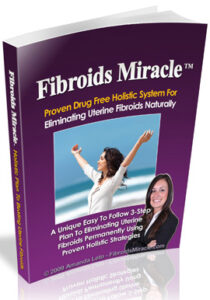Uterine Fibroids: Can Your Diet Make a Difference?
Diving into the world of uterine fibroids, we often find ourselves grasping at straws, searching for any semblance of control in a seemingly uncontrollable situation. It’s here, in this quest for empowerment, that the topic of diet and nutrition emerges, not as a whisper but as a roar. Can what we eat truly sway the tide in the battle against uterine fibroids? The answer is not a simple yes or no, but a journey into the intricate dance between our bodies and the foods we consume.
Picture this: you’re navigating a dense forest—the forest of dietary advice, where every tree is a different opinion and every leaf a new study. It’s easy to get lost, but let’s carve out a clear path. The consensus isn’t that diet is a magic bullet for fibroids, but rather a piece of the puzzle, a tool in your kit to manage symptoms and potentially influence their progression.
Imagine your body as a finely tuned instrument, and your diet as the hands that play it. Certain foods are like harmonious melodies, supporting your body’s natural rhythm. Think of fruits, vegetables, whole grains, and legumes—each one a note in a symphony that promotes hormonal balance and reduces inflammation, two key players in the fibroid saga. These foods are your allies, rich in antioxidants and fiber, they whisper to your body, encouraging it to heal and maintain balance.
But just as there are harmonies, there are also dissonances—foods that can exacerbate fibroid symptoms. Red meat, high-fat dairy, and processed foods are the culprits here, strumming chords that resonate with discomfort and imbalance. They’re like the villains in a story, contributing to estrogen dominance and inflammation, potentially fueling the growth of fibroids.
Now, let’s not forget the power of hydration. Water, in its simplicity, is a hero in this tale. It flushes toxins from your body, supports hormonal balance, and keeps everything flowing smoothly. It’s the unsung melody that binds the symphony together, a fundamental yet often overlooked element in managing fibroids.
Amidst this narrative of diet and fibroids, it’s crucial to remember that every body is a unique story, with its own nuances and needs. What works for one person may not for another, making it vital to listen to your body’s cues and adapt your dietary choices accordingly.
So, can your diet make a difference in managing uterine fibroids? It’s not the lone warrior in the fight, but it’s certainly part of the army, a tangible aspect of your lifestyle you can adjust in your quest for well-being. Embracing a diet rich in whole foods, low in processed ingredients, and attentive to your body’s reactions is not just about managing fibroids; it’s about nurturing your body, honoring its needs, and embarking on a journey toward holistic health.
In the end, managing uterine fibroids with diet and nutrition is not about strict rules or quick fixes. It’s about building a relationship with your body, understanding its language, and nourishing it with the care it deserves. As we navigate this path, let’s do so with grace, patience, and an open heart, ready to embrace the healing power of food in our journey towards health and balance.
Fibroids Miracle by Amanda Leto
Amanda Leto, the author of Fibroids Miracle, is a committed researcher and health consultant specializing in a natural solution for uterine fibroids. Her approach focuses on eliminating fibroids’ root causes, improving fertility, and life quality without medication or surgery. For more information, read our fibroids miracle review or visit her website.
#FibroidsDiet #NutritionHeals #HealthyLiving #FightFibroids #WellnessJourney #NaturalHealth #FoodAsMedicine
